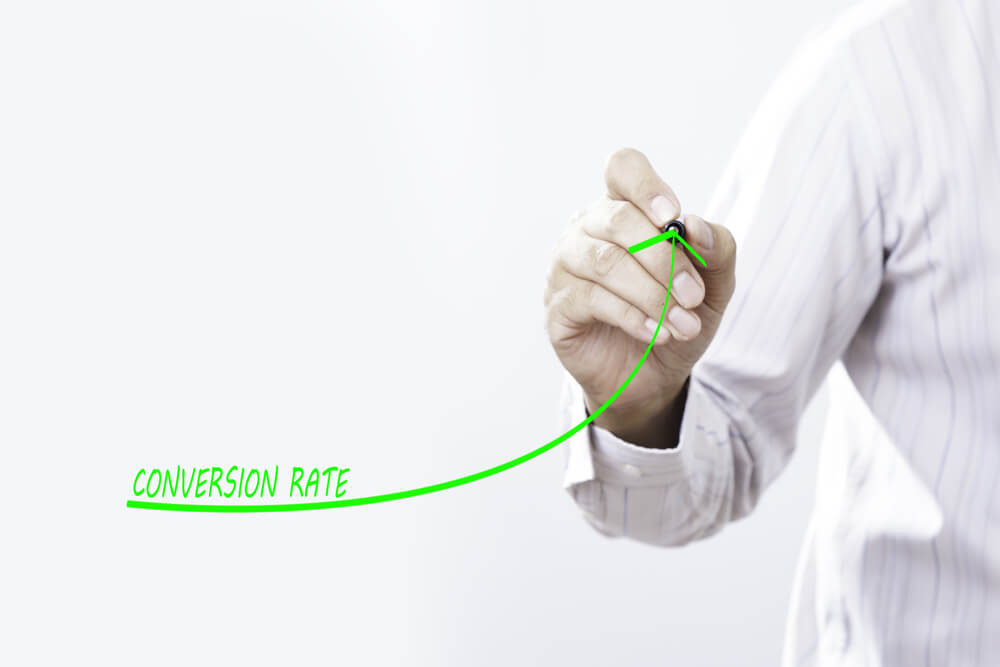
Which Content Metrics and KPIs Matter for Brand Performance?
Businesses connect with their target audience through effective content marketing strategies they create themselves or with the help of a content marketing services agency. Whichever path you follow, how do you know your strategies are working?
The right metrics and key performance indicators (KPIs) help you understand and improve brand performance. They provide insights into the effectiveness of content strategies in boosting engagement and conversion.
These include the following:
 Conversion metrics are measurements used to track how well content drives sales or desired actions. They provide tangible evidence of its effect on revenue and customer engagement.
Examples include the following:
Conversion metrics are measurements used to track how well content drives sales or desired actions. They provide tangible evidence of its effect on revenue and customer engagement.
Examples include the following:
 User behavior metrics track how visitors interact with a website or digital content. Content personalization involves tailoring content to individual users based on preferences, behaviors, and demographics.
Both are crucial in brand performance because they enhance user engagement, satisfaction, and conversion rates by delivering relevant and personalized experiences. Businesses can build stronger connections with the audience and drive loyalty and advocacy.
Consider these user behavior metrics that define brand performance:
User behavior metrics track how visitors interact with a website or digital content. Content personalization involves tailoring content to individual users based on preferences, behaviors, and demographics.
Both are crucial in brand performance because they enhance user engagement, satisfaction, and conversion rates by delivering relevant and personalized experiences. Businesses can build stronger connections with the audience and drive loyalty and advocacy.
Consider these user behavior metrics that define brand performance:
 Content ROI measures the effectiveness of content marketing efforts by comparing the return generated from the copy against the invested resources.
Understanding content ROI optimizes content creation and distribution strategies to maximize returns, achieve business objectives, and promote growth and competitive advantage.
The following metrics reflect content ROI:
Content ROI measures the effectiveness of content marketing efforts by comparing the return generated from the copy against the invested resources.
Understanding content ROI optimizes content creation and distribution strategies to maximize returns, achieve business objectives, and promote growth and competitive advantage.
The following metrics reflect content ROI:
- Engagement metrics
- Conversion metrics
- Search engine optimization (SEO) metrics
- User behavior metrics
- Audience growth
- Content return on investment (ROI)
We’re the top B2B Content Marketing Agency in America. Watch the video below to learn why.
Considering Engagement Metrics: Beyond the Basics
Measuring engagement metrics is essential for evaluating the effectiveness of your marketing efforts, especially content. You get valuable insights into audience behavior, preferences, and interests that optimize strategies, improve audience engagement, and drive better results and returns. The following are relevant engagement metrics:- Click-through rate (CTR) is the percentage of users who click on a link, advertisement, or call to action (CTA). It Indicates the effectiveness of content in driving user engagement and prompting action. Calculate it by dividing the number of clicks by the number of impressions and multiplying the quotient by 100.
- Bounce rate reflects the percentage of visitors who exit the website after checking out only one page. It determines whether the content effectively captures and retains the audience’s attention. High bounce rates suggest that the content does not meet user expectations or fails to effectively engage.
- Time on page measures the average time that users spend on a web page or content and reflects user engagement and interest. A longer time on the page means the copy is engaging and valuable to users.
- Social shares quantify the number of times people share content on social media platforms such as Facebook, Twitter, or LinkedIn. It defines audience engagement and willingness to endorse or promote the copy. High social shares extend the brand’s reach through user-generated promotion and foster brand advocacy.
- Comments represent direct feedback and engagement from users. The metric indicates interest, involvement, and willingness to interact with the content and the brand. These provide valuable insights into audience sentiment, preferences, and perceptions of the copy.
Focusing on Conversion Metrics: Tying Content to Sales
 Conversion metrics are measurements used to track how well content drives sales or desired actions. They provide tangible evidence of its effect on revenue and customer engagement.
Examples include the following:
Conversion metrics are measurements used to track how well content drives sales or desired actions. They provide tangible evidence of its effect on revenue and customer engagement.
Examples include the following:
- Conversion rate is the percentage of website visitors who complete a desired action, such as making a purchase or filling out a form, out of the total number of visitors.
- CTR is the ratio of users who click on a specific link to the number of total users who view a page, email, or advertisement. It measures the effectiveness of a CTA in driving traffic.
- Average order value (AOV) is the average amount of money that customers spend in a single transaction. A higher AOV indicates more value per sale, contributing to increased revenue.
- Cart abandonment rate is the percentage of online shoppers who add items to their shopping cart but then leave the website without completing the purchase. It highlights potential friction points in the checkout process.
- Return on investment (ROI) measures the profitability of an investment, calculated as the net profit divided by the initial investment cost. It assesses the effectiveness of marketing campaigns or initiatives in generating revenue relative to the resources invested.
Tracking Organic Success through SEO Performance Metrics
SEO performance metrics are essential in brand performance as they indicate the effectiveness of a website’s visibility and relevance in strengthening your online presence and widening audience reach. By tracking these metrics, brands can optimize SEO to improve rankings, drive more qualified traffic, and enhance brand visibility and authority. The following metrics measure search optimization performance:- Organic search traffic is the number of visitors who land on a website through unpaid (organic) search engine results. It indicates the overall visibility and attractiveness of the website to search engine users.
- Keyword rankings are the positions your web pages occupy on the search results for specific keywords or phrases. Higher rankings signify better visibility and relevance for targeted search queries.
- Backlink profile is the quantity and quality of external websites linking to your pages. A strong backlink profile enhances authority and credibility in the eyes of search engines, positively influencing rankings.
- Page load speed is the time it takes for a web page to fully load in a user’s browser. Faster load time improves user experience and positively influences search engine rankings because speed is a factor in search algorithms.
Monitoring User Behavior Metrics and Content Personalization
 User behavior metrics track how visitors interact with a website or digital content. Content personalization involves tailoring content to individual users based on preferences, behaviors, and demographics.
Both are crucial in brand performance because they enhance user engagement, satisfaction, and conversion rates by delivering relevant and personalized experiences. Businesses can build stronger connections with the audience and drive loyalty and advocacy.
Consider these user behavior metrics that define brand performance:
User behavior metrics track how visitors interact with a website or digital content. Content personalization involves tailoring content to individual users based on preferences, behaviors, and demographics.
Both are crucial in brand performance because they enhance user engagement, satisfaction, and conversion rates by delivering relevant and personalized experiences. Businesses can build stronger connections with the audience and drive loyalty and advocacy.
Consider these user behavior metrics that define brand performance:
- Time on page measures how long visitors spend on a specific web page, indicating their level of engagement with the content.
- Bounce rate reflects the percentage of visitors who navigate away from a website after viewing only one page, highlighting the relevance and appeal of the landing page.
- CTR tracks the percentage of users who click on a specific link or call to action, indicating the effectiveness of content in driving further engagement.
- Scroll depth indicates how far users scroll down a web page, providing insights into their level of interest and engagement with the content.
- Conversion rate measures the percentage of website visitors who complete a desired action, such as making a purchase or filling out a form, demonstrating the effectiveness of content in driving desired outcomes.
Highlighting Audience Growth: Measuring Reach and Expansion
Audience growth metrics track the increase in the size and reach of a brand’s audience over time. These indicate the brand’s ability to expand its market, attract new audiences, and maintain existing ones. The following are critical metrics to assess audience growth:- Follower count tracks the number of followers or subscribers across social media platforms, measuring the growth of the brand’s audience.
- Website traffic measures the volume of visitors to the brand’s website over time, reflecting the expansion of online audience reach.
- Email subscribers metric monitors the growth of signups for the brand’s email list, indicating an increase in potential direct communication channels with the audience.
- Engagement rate assesses the level of interaction and participation of the audience with the brand’s content or posts. A high rate means active audience involvement.
- Reach determines the number of unique users exposed to the brand’s content or messaging. It helps identify the expansion of your brand’s visibility or influence across various channels.
Calculating the Bottom Line with Content ROI
 Content ROI measures the effectiveness of content marketing efforts by comparing the return generated from the copy against the invested resources.
Understanding content ROI optimizes content creation and distribution strategies to maximize returns, achieve business objectives, and promote growth and competitive advantage.
The following metrics reflect content ROI:
Content ROI measures the effectiveness of content marketing efforts by comparing the return generated from the copy against the invested resources.
Understanding content ROI optimizes content creation and distribution strategies to maximize returns, achieve business objectives, and promote growth and competitive advantage.
The following metrics reflect content ROI:
- Cost per acquisition (CPA) calculates the cost incurred to acquire a new customer through the strategy, allowing brands to assess the efficiency of their investment in boosting sales and revenue.
- Customer lifetime value (CLV) measures the total value a customer brings to a brand over their entire relationship. It helps determine the long-term return generated from content activities.
- Conversion rate tracks the percentage of users who take a desired action, such as making a purchase or signing up for a newsletter, as a result of engaging with content. It shows the effectiveness of content in pushing leads deeper into the sales funnel.
- Social shares and engagement metrics evaluate the number of shares, likes, comments, and other forms of engagement generated by content on social media platforms. It examines content’s reach and effect on audience interaction and brand visibility.
- Revenue attribution identifies the specific revenue generated from content marketing efforts. It allows brands to directly link revenue to content initiatives and assess the direct influence of the strategy on business outcomes.
Summing Up
Tracking content metrics and KPIs enables brands to identify which types of copy resonate best with the audience and inform content creation and distribution strategies. The insights help optimize the plan to continuously enhance engagement, build stronger connections with the audience, and drive business growth and success. How might reevaluating your content metrics redefine your brand’s digital strategy? It helps you generate more sales and revenue. Learn more about these KPIs by working with the top digital marketing agency in the industry. Contact Digital Authority Partners (DAP) today to schedule a free consultation.Want To Meet Our Expert Team?
Book a meeting directly here



